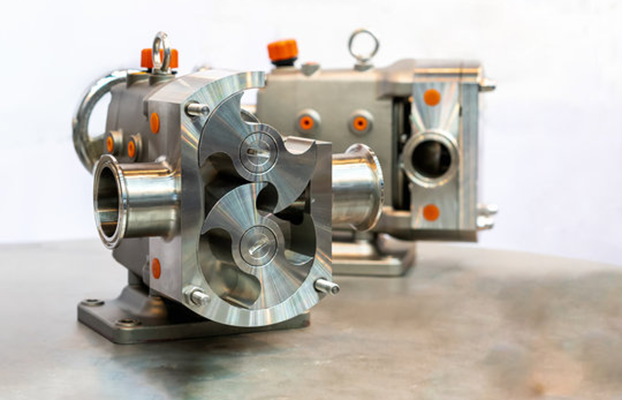
The present parchment pumps, turbomolecular pumps, and particle pumps are the most popular vacuum advancements utilized in scholastic tests, insightful instruments, and modern cycles, yet the foundations of vacuum technology return into the past. We should investigate the historical backdrop of how these astonishing gadgets were designed and worked on throughout the long term.
Middle Age History:
In 1613, Galileo Galilei was the person who proposed and later demonstrated that air has mass and thickness. Subsequently, the air was first viewed as a high-thickness substance. This prompts further speculation that air can some way or another be taken out from a specific space. Galilei’s examinations were completed by Gasparo Berti in 1640 and by Evangelista Torricelli in 1644. Torricelli utilized a glass tube around 1 m long and filled it with mercury. He fixed the open finish of the cylinder with the tips of his fingers, then, at that point, turned the shut end over. The cylinder was then submerged in a supply of mercury and the finger delivered so the mercury in the cylinder met the repository. Estimating from the fluid side of the holder, the segment of mercury in the cylinder is 76 cm lower. The space left in the glass tube over the mercury is a vacuum. Mercury levels are autonomous of the above mass. His work, known as the Torricelli, analysis, was the principal fruitful endeavor to make a vacuum and persuaded mainstream researchers of its presence.
In 1646, Blaise Pascal rehashed Torricelli’s investigations by attempting different fluids. His discoveries made it conceivable to comprehend that the greatest stature is contrarily relative to the thickness of the fluid utilized.
Around 1650, Otto Fongerike, one of the main vacuum researchers of the time, utilized an exceptional gadget to make a vacuum. After debilitating the circle and leaving it for a couple of days, some way or another the air started to enter into the circle. Examination of the issue uncovered that air was getting into the ball, essentially through the pump cylinder and valve seal. To check this peculiarity, Gerique constructed another pump with parts fixed in water. This is a thought that is yet utilized in present-day revolving vane pumps that utilization oil (as opposed to watering) as the fixing component.
Nineteenth-Century History:
During a long time from 1850 to 1900, the improvement of vacuum technology was driven first by the requirement for logical examination and afterward by the requirement for the light business. During this period, the attainable strain fell for a considerable length of time and the vacuum framework turned out to be progressively complex. For instance, progresses in fixing technology and the requirement for complete degreasing of vacuum gear has become obvious. With the advancement of the active hypothesis of gas by Pieter von Clausing, James Clerk Maxwell, and Ludwig Boltzmann, and the development of the vacuum check by Herbert McLeod in 1874, the vacuum could be considered as a quantifiable actual amount interestingly. Sum.
In 1879, Thomas Alba Edison started fabricating the principal lights utilizing vacuum technology. Edison explored different avenues regarding his initial developments and ultimately utilized a better mercury stream pump to deliver the primary lights that necessary tensions under 10-3 Torr.
Twentieth Century:
Toward the start of the twentieth century, because of the monstrous reception of electrical energy, the utilization of vacuum pumps, for example, scroll pumps arose as a modern cycle. The approach of radios and TVs, both cylinders based, helped increment the interest for vacuum hardware. The metallurgical advantages of vacuuming before long turned out to be generally perceived. Raytheon put in the main recorded modern request for a vacuum heater in 1929.
During this period, Wolfgang Gaede from Germany and Irving Langmuir from the United States had an incredible effect on the business. Gaede imagined the rotational mercury pump and Langmuir dealt with gas-filled glowing lights. As the atomic power period started during the 1950s, more perplexing vacuum applications kept on being created. These improvements in vacuum science and technology incorporate high-energy molecule physical science, nuclear power, isotope detachment, microelectronic, and optical coatings, imaging of hotness delicate fluids (for instance, emulsions), and vacuum metallurgy (for instance, consolidations).
Conclusion:
Current vacuum applications in the industry range from sticking gadgets, (for example, pull cups) to the affidavit of electronic circuits on silicon chips. Vacuum prerequisites are essentially as different as the cycles that utilization vacuum. In the vacuum scope of 1 Torr to air alone, the quantity of uses utilizing vacuum is tremendous, mechanical handling, oil degassing, gas examining, watery enhancement, refining, filtration, electrical impregnation of parts, steel. Degassing, Packing, Vacuum Forming Today, the most minimal vacuum accomplished (on Earth) is 10 to 13 Torr, and researchers keep on investigating the field of vacuum technology. Find out about vacuum technology and items like turbomolecular pumps, particle pumps, scroll pumps, rotational vane pumps, dissemination pumps, vacuum checks, spill indicators, and the sky are the limit from there.











